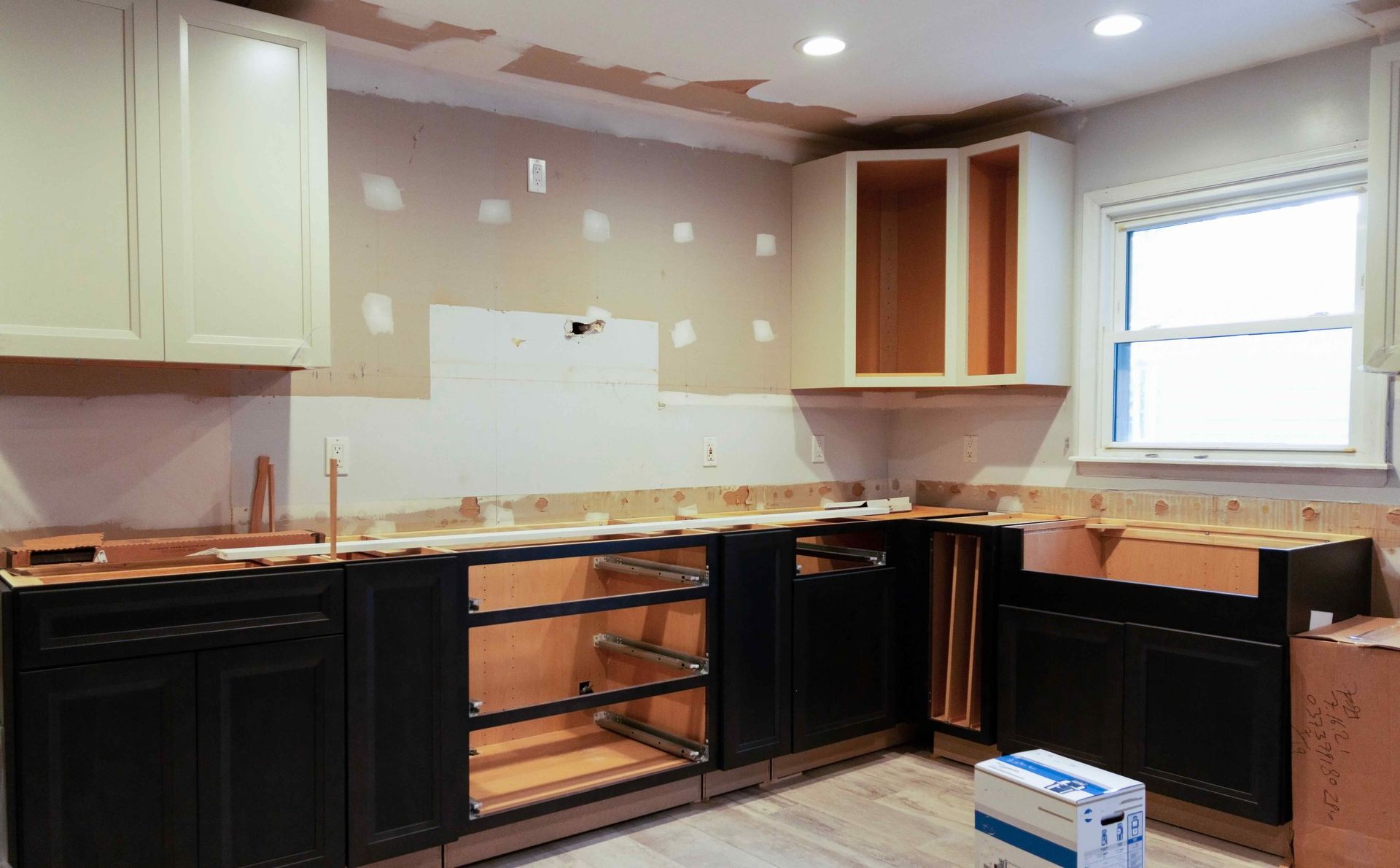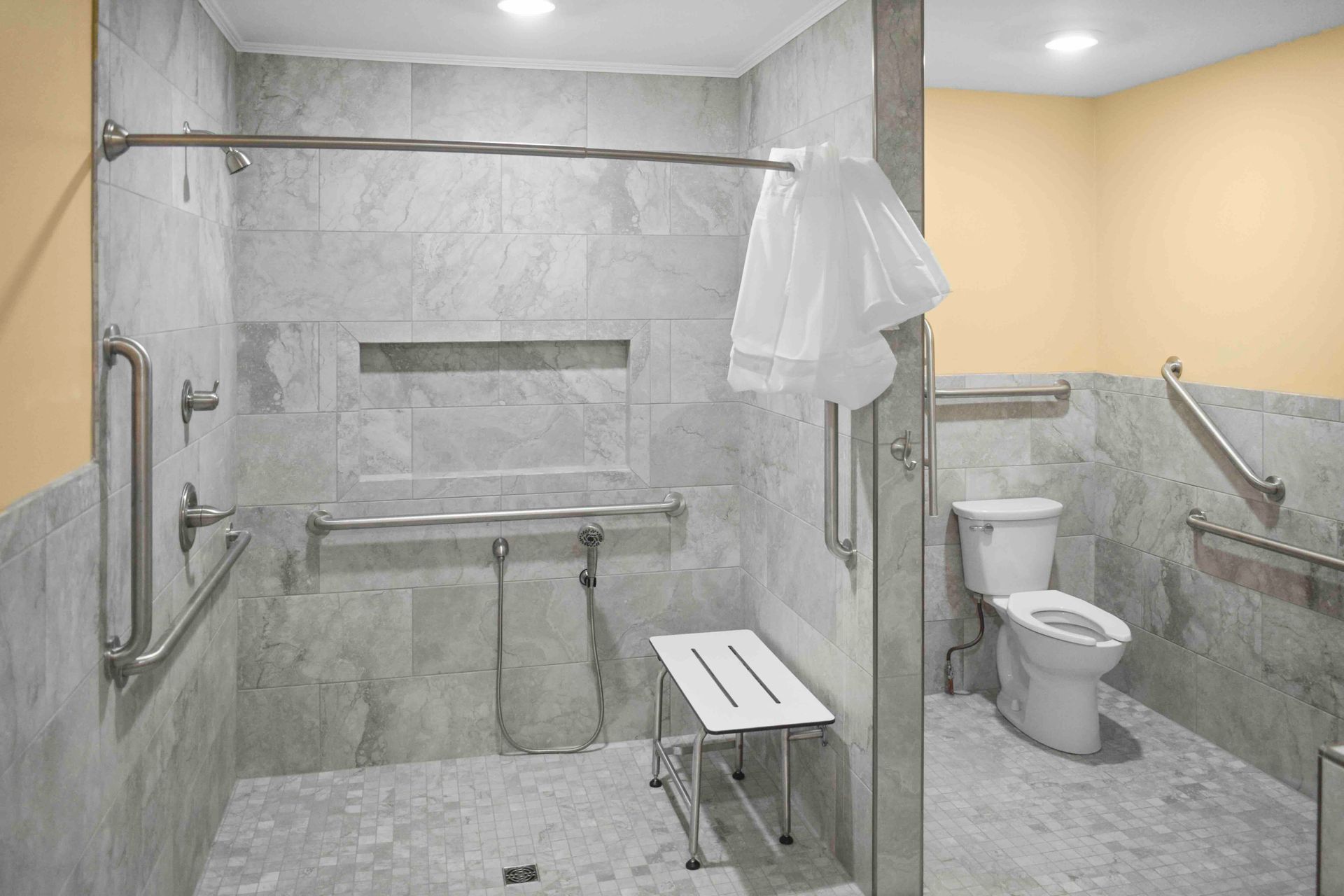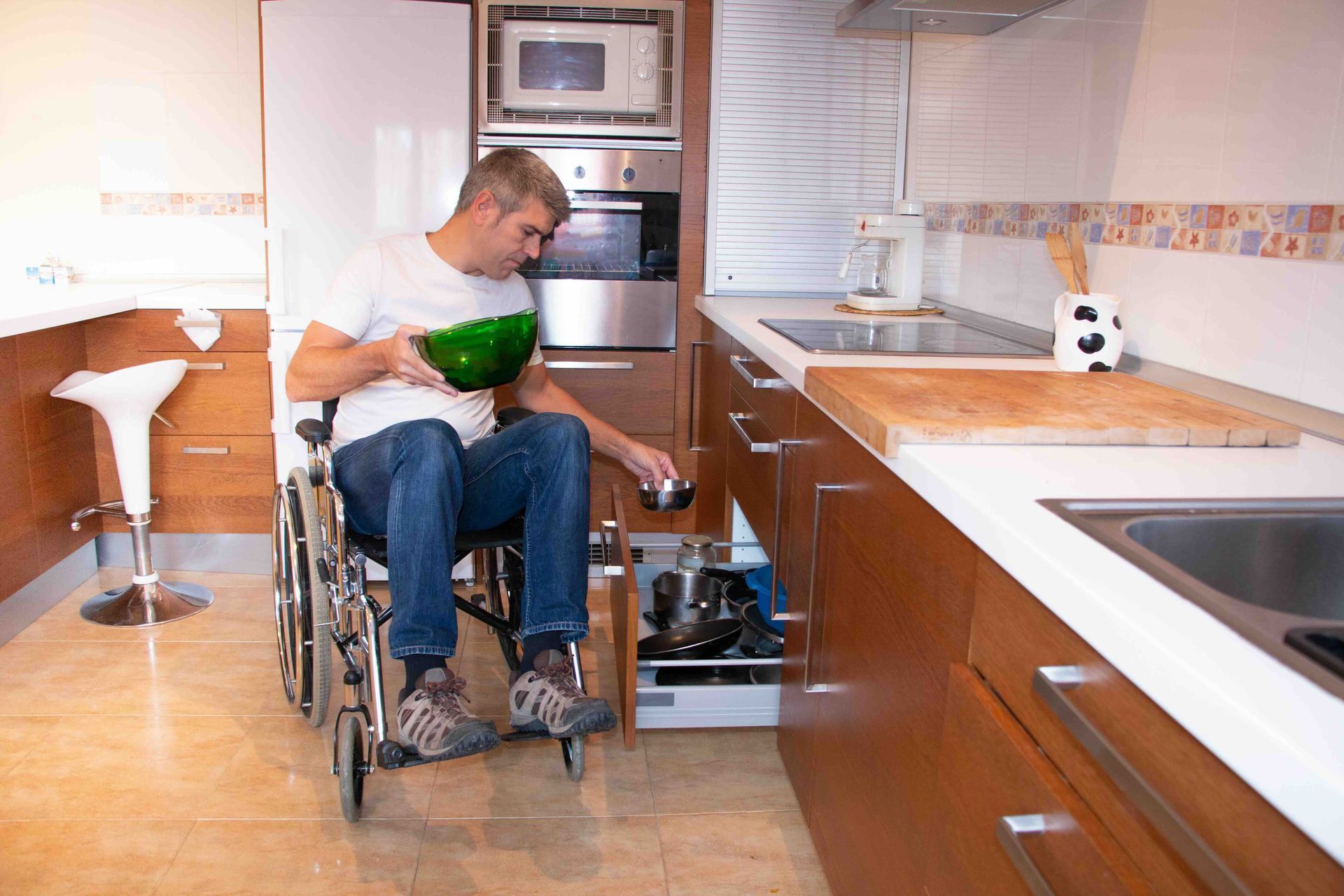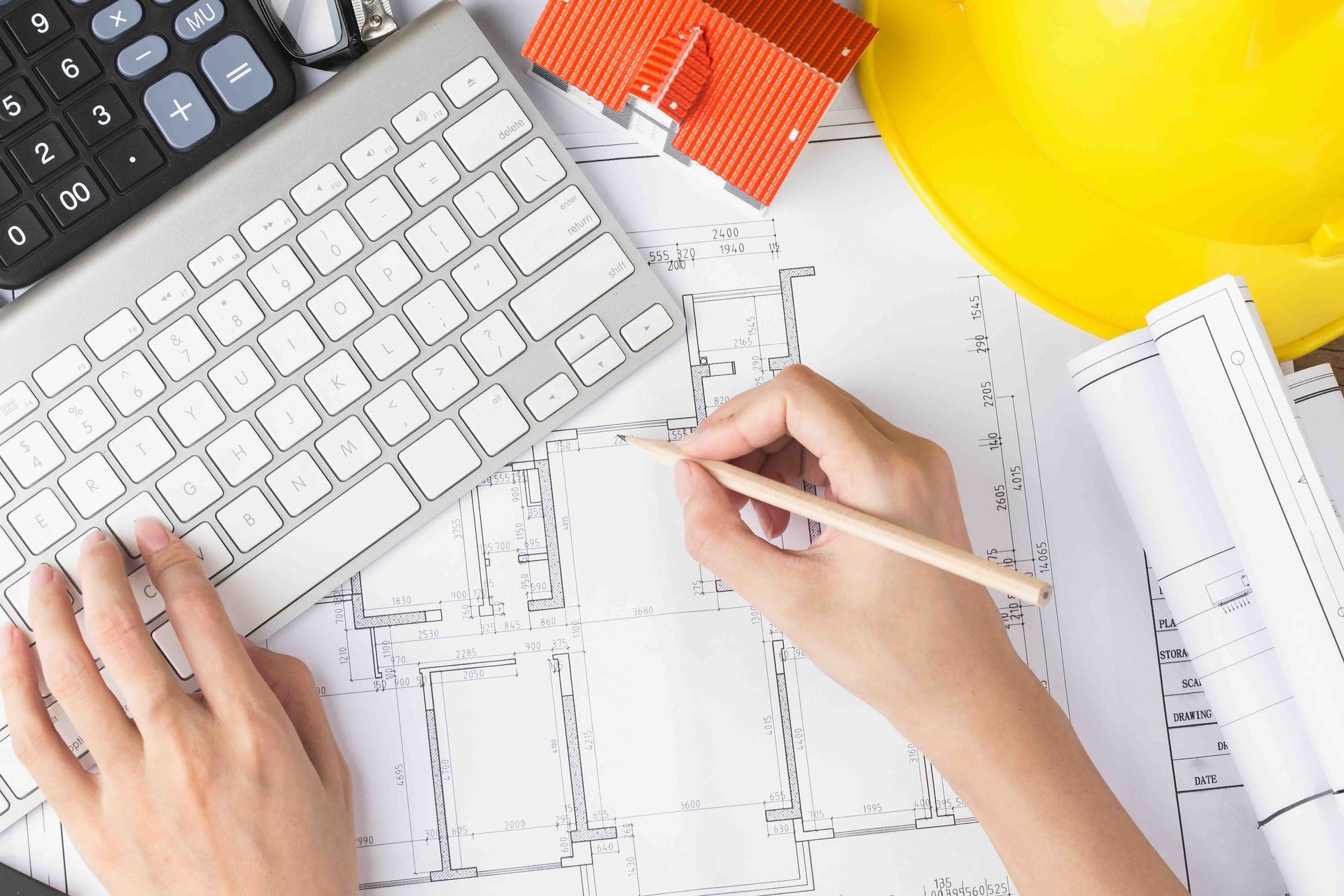Preventing Complications Associated with Immobility/Reduced Mobility: A Home Care Guide
The journey of caring for an immobile or partially mobile loved one extends beyond managing their initial diagnosis; it pivots to a vigilant defense against the ripple effects of inactivity.
These potential complications are diverse and serious, ranging from painful pressure injuries (also known as bedsores or decubitus ulcers) and debilitating respiratory issues like pneumonia, to insidious muscle atrophy, joint contractures, and even profound social isolation.
The cornerstone of effective home care for patients with mobility issues, such as those who require wheelchairs at home, is proactive prevention. By anticipating and mitigating these risks, caregivers can significantly enhance the well-being of those under their charge.
Are you looking for an expert resource in accessible spaces, special modifications for persons with mobility challenges, and more? Contact Lakeshore Barrier Free today.
Practical Steps for All Immobile/Reduced Mobility Individuals
The foundation of preventative care rests on several key pillars that apply universally to all individuals with limited mobility.
Maintaining Skin Integrity and Circulation
Meticulous skin care and the promotion of healthy circulation are arguably the most critical aspects of preventing immobility-related complications.
- Regular Repositioning: This is non-negotiable. Establishing a strict, regular schedule for repositioning—ideally
every 2 hours, day and night—is paramount. This consistent change in position redistributes pressure, preventing prolonged compression on any single area.
- Pressure Offloading Tools: Utilize an array of supportive aids such as
pillows, wedges, and specialized cushions to offload pressure from vulnerable areas. Key high-risk zones include the heels, hips, tailbone (sacrum), elbows, and shoulders. These tools help to elevate or cushion bony prominences, reducing direct pressure.
- Daily Skin Inspection: Make a thorough, head-to-toe skin inspection a daily ritual. Pay particular attention to the skin over bony prominences. Look for any persistent redness that doesn't disappear after pressure is relieved, blistering, open sores, or changes in skin warmth or tenderness. Document any findings and report them to a healthcare professional immediately, as early detection is vital to prevent escalation.
- Hygiene and Moisture Management: Keep the skin meticulously clean and dry. Use mild, pH-balanced soap and warm water, ensuring the skin is completely dried afterward, especially in skin folds. Apply
barrier creams or moisturizers as recommended by a healthcare professional to protect the skin from moisture and maintain its elasticity. Promptly addressing incontinence is also crucial; soiled briefs or bedding create a moist environment that significantly increases the risk of skin breakdown.
- Promoting Circulation and Preventing DVT: Encourage simple activities like ankle pumps, foot circles, and gentle knee bends if the individual has any capacity for movement. These exercises help stimulate blood flow in the lower extremities, reducing the risk of Deep Vein Thrombosis (DVT), blood clots that can be life-threatening. If recommended by a healthcare professional, ensure compression stockings are applied correctly and worn as directed, and removed daily for skin inspection. Adequate fluid intake also plays a supportive role in maintaining good circulation.
Optimizing Respiratory and Musculoskeletal Health
Maintaining the health of the respiratory system and preventing musculoskeletal deterioration are crucial for comfort and overall well-being.
- Respiratory Management: Encourage deep breaths and effective coughing several times a day. These actions help to fully expand the lungs, prevent the collapse of small airways (atelectasis), and clear accumulated secretions, thereby reducing the risk of pneumonia. Whenever safe and possible, assist the individual to sit upright in a chair or elevate the head of the bed to at least a 30-degree angle. This upright positioning promotes optimal lung expansion and makes breathing easier. Frequent repositioning also aids in mobilizing lung secretions, preventing them from pooling in one area.
- Preventing Muscle Atrophy and Joint Contractures: Consistent attention to movement is vital. Gently move each of the individual's joints through its full range of motion at least twice daily. This prevents stiffness, shortening of muscles and tendons (contractures), and preserves joint flexibility. If the individual has any ability to move, encourage active participation; otherwise, perform passive range of motion exercises, moving their limbs for them. Always ensure limbs are positioned in a functional and neutral alignment to prevent contractures, avoiding prolonged flexion or extension of joints. For example, use a foot drop brace if indicated, or place a pillow under the calves to keep heels off the bed.
Ensuring Proper Nutrition, Hydration, and Elimination
Nutrition, hydration, and healthy elimination are foundational to overall health and recovery.
- Nutritional Support: A
nutritious, well-balanced diet is fundamental. Focus on meals rich in
protein, which is essential for tissue repair, wound healing, and maintaining muscle mass. Adequate caloric intake is also important to prevent weight loss and provide energy.
- Hydration: Equally important is ensuring
sufficient fluid intake. Dehydration can lead to a host of problems including constipation, urinary tract infections, and kidney stones. Caregivers should closely monitor food and fluid intake to ensure adequate consumption. If concerns arise about appetite or intake, consult a doctor or dietitian for personalized recommendations or nutritional supplements.
- Bowel and Bladder Management: Establishing a regular toileting schedule, even if incontinence products are used, promotes regularity and helps prevent complications. A diet high in fiber and fluids is crucial for preventing constipation. If constipation remains an issue, consult a healthcare professional about appropriate medications or interventions. Monitoring bowel movements and urine output is also important to identify any changes or concerns.
Nurturing Psychological and Emotional Well-being
Immobility can be profoundly isolating, making the individual's psychological and emotional well-being a critical aspect of care.
- Combating Isolation: Actively combat social isolation by engaging in
regular conversation, reading aloud, playing gentle games, or facilitating visits from friends and family, respecting the individual's energy levels and preferences.
- Establishing Routine: A
predictable daily routine provides a sense of normalcy, structure, and control in a situation where much autonomy may have been lost.
- Encouraging Engagement: Help the individual adapt their hobbies or interests to their current capabilities. This could include audiobooks, puzzles, simple crafts, listening to music, or watching movies.
- Optimizing Environment: Ensure the living space is well-lit, preferably with natural light, and offers a view outside if possible. This can significantly boost mood and contribute to a sense of connection with the world.
Insights for Caregivers
Caregiving is a deeply rewarding yet undeniably demanding role. To provide effective care, caregivers must also prioritize their own well-being.
- Patience and Empathy: These qualities are paramount. Recognize that immobility can be deeply frustrating, isolating, and even depressing for the individual. Approach care with profound compassion, understanding, and a non-judgmental attitude.
- Continuous Education: Your commitment to continuous education about your loved one's specific needs and potential complications is invaluable. Attend workshops, consult reputable medical websites and resources, and never hesitate to ask healthcare professionals questions. Knowledge empowers you to provide better care.
- Caregiver Well-being:
Caregiver burnout is a significant risk. It's not selfish; it's essential to prioritize your own physical and mental health. Ensure you take regular breaks, even short ones. Seek support from other family members, friends, or caregiver support groups. Maintaining your physical activity, healthy diet, and mental relaxation techniques (e.g., mindfulness, hobbies) is not a luxury, but a necessity. Remember the adage:
"You cannot pour from an empty cup."
- Consistent Scheduling: Establishing a consistent schedule for turns, exercises, meals, and hygiene provides structure and ensures that preventative measures are applied consistently and effectively.
- Seeking Professional Guidance: Never hesitate to seek professional guidance. Doctors, nurses, physical therapists, occupational therapists, and dietitians are invaluable resources. They can offer personalized advice, demonstrate proper techniques, and address any concerns or complications that arise.
Specific Considerations for Patients Requiring Wheelchairs
While wheelchairs are vital mobility aids, they introduce unique challenges, particularly concerning pressure management and circulation.
- Proper Wheelchair Fit: A
properly fitted wheelchair is absolutely essential. An ill-fitting chair can cause significant discomfort, poor posture, and, most critically, lead to severe pressure injuries due to uneven pressure distribution. Consulting an
occupational therapist (OT) for a professional assessment of wheelchair fit is highly recommended. An OT can ensure the chair meets the individual's specific needs, including seat width, depth, back height, and footrest positioning.
- Pressure-Relieving Cushions: Investing in a high-quality,
pressure-relieving cushion specifically designed for wheelchair use is crucial. These cushions, available in various materials such as gel, foam, or air, are indispensable for evenly distributing pressure over a larger surface area, significantly reducing the risk of pressure injuries on the buttocks and tailbone.
- Frequent Weight Shifts: Even with a good cushion, encourage and assist with
frequent weight shifts in the wheelchair, perhaps every 15-30 minutes. This can involve leaning side-to-side, leaning forward (if safe and supported), or utilizing a
tilt-in-space feature if the wheelchair is equipped with one. This feature allows the entire seat to tilt backward, changing the angle of pressure on the buttocks and sacrum without changing the hip or knee angle.
- Foot and Leg Positioning: Ensure feet are properly supported on the footrests to prevent pressure on the heels and maintain good posture. Adjust elevating leg rests to prevent hyperextension of the knees or undue pressure behind the knees, which can restrict circulation.
- Armrest Support: Armrests should provide adequate support without causing shoulder impingement or promoting poor posture.
- Home Accessibility: Ensure the home environment is accessible and allows for easy wheelchair maneuverability. This not only reduces fall risks during transfers but also promotes the individual's independence and ability to navigate their living space more freely.
- Targeted Skin Inspection: When inspecting skin, pay particular attention to the ischial tuberosities (buttocks bones) and the sacrum (tailbone), as these areas bear the most weight in a seated position and are highly susceptible to pressure injuries.
Specific Considerations for Patients Requiring Patient Lifts
Patient lifts are invaluable tools for safe transfers, protecting both the patient from falls and the caregiver from injury. However, their use demands thorough training and strict adherence to safety protocols.
- Comprehensive Training: Before operating any patient lift, caregivers
must receive comprehensive training from a healthcare professional, such as a physical therapist or a medical equipment representative. This training should cover its correct operation, maintenance, and the specific sling types.
Never attempt to use a lift without proper instruction.
- Correct Sling Selection and Sizing: It is vital to choose the
right sling type (e.g., full body, commode, U-sling, hygiene sling) and
size for the individual and the specific transfer being performed. An ill-fitting sling can be uncomfortable, unsafe, and ineffective.
- Weight Capacity Verification: Always confirm the
weight capacity of both the lift and the sling. Ensure the patient's weight is well within these limits. Exceeding weight limits is extremely dangerous.
- Clear Environment: Before any transfer, ensure the area around the lift is completely clear of obstacles, furniture, or rugs that could impede movement or cause tripping hazards.
- Secure Sling Attachment:
Double-check that all sling straps are securely attached to the lift's hanger bar or spreader bar before initiating the lift. Listen for clicks or visual confirmation of engagement.
- Clear Communication: Throughout the transfer, maintain clear and reassuring communication with the patient. Explain each step, ensure their comfort, and watch for any signs of distress.
- Smooth Operation: Operate the lift smoothly, avoiding sudden, jerky movements that could cause discomfort or instability.
- Regular Maintenance Checks: Implement a schedule for
regular maintenance checks of the lift. Inspect for any signs of wear and tear, loose parts, frayed straps, or damage. Follow the manufacturer's guidelines for cleaning and servicing.
- Caregiver Ratio: Depending on the patient's condition, weight, and the type of lift, one or two caregivers may be required for safe operation. Always err on the side of caution and ensure adequate assistance is available.
By diligently implementing these practical steps and insights, family members and caregivers can significantly reduce the risk of the multitude of complications associated with immobility. This proactive approach not only enhances the physical health and safety of their loved ones but also profoundly contributes to their comfort, dignity, and overall quality of life, fostering a more secure and supportive home environment. Remember, in the face of reduced mobility, proactive and informed care is truly the best defense.
TALK TO THE EXPERTS OF LAKESHORE BARRIER FREE TODAY!
We believe that everyone should have access to every area of their home! We work directly with you to make sure that every grab bar, bathroom sink, kitchen countertop, patient lift, and more is at the perfect location for you and your loved ones. Call us at
(616) 477-2685 or email us at
Info@LakeshoreBarrierFree.com
Share this blog







